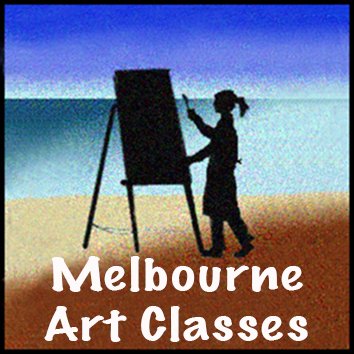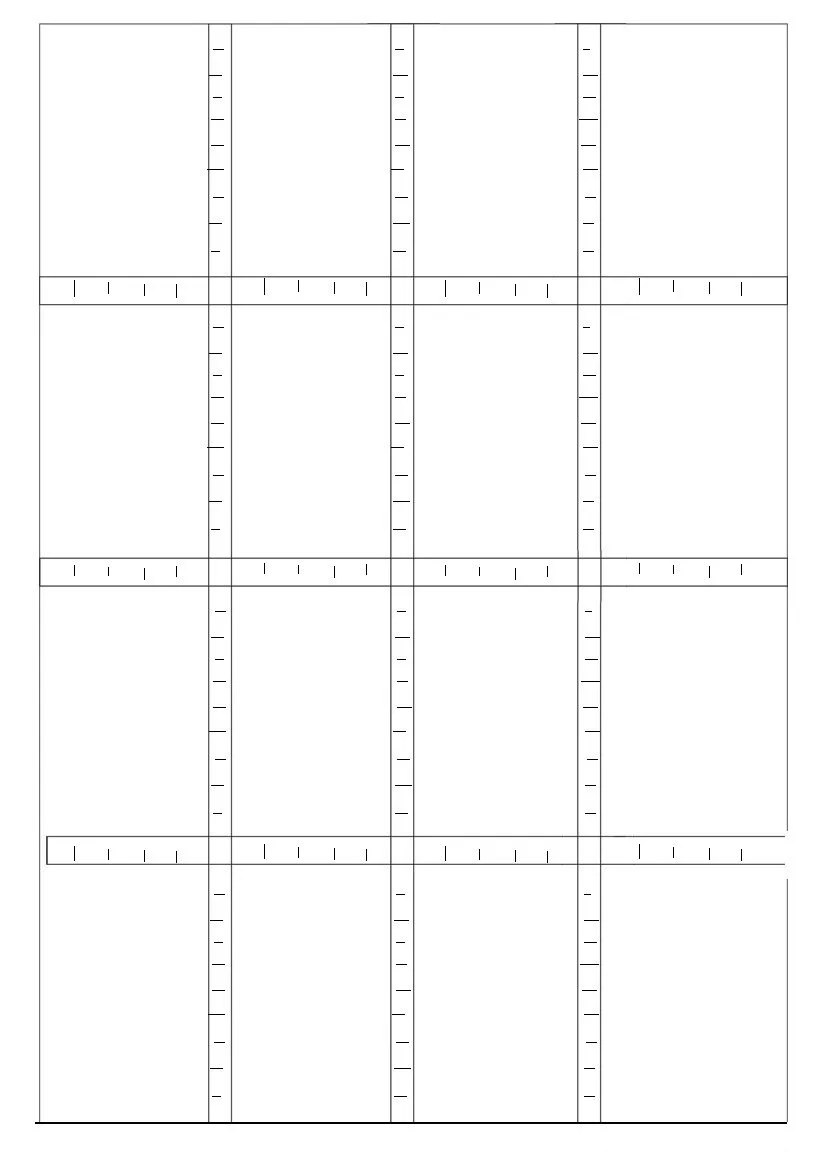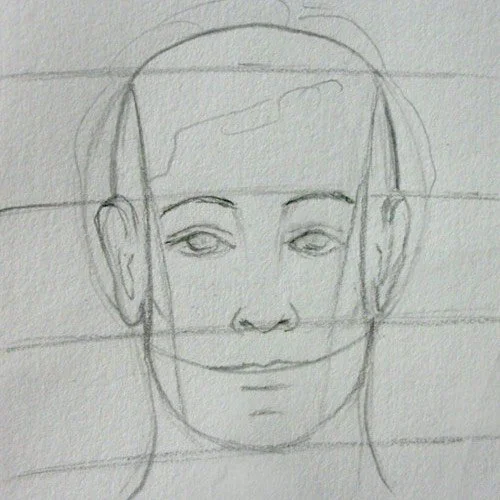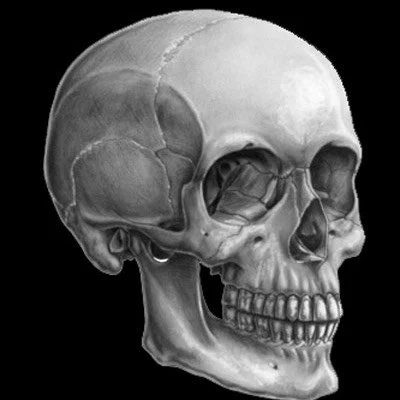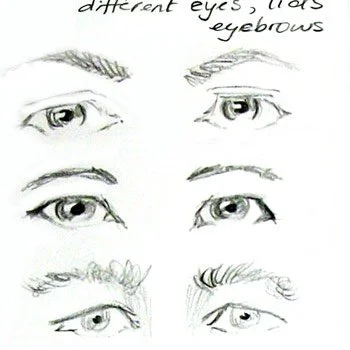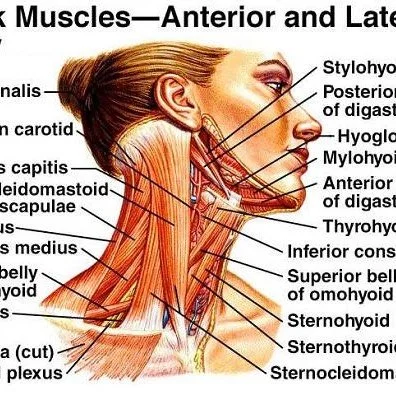drawing HEADS - GETTING STARTED
Learn to build what we like to call 'standard egg heads', and practice them over and over again so that when you are drawing from life or inventing a head, at least the proportions start off in the ballpark and the individual differences to the standard head can be then detailed to get better at likenesses later on.
Mostly when people start out trying to draw the basic shape of an egg, it can look like a potato, a zucchini, a wonky circle…don’t worry, if you repeat the attempt over and over, even though it seems so simple, looking at an example, eventually, your eggs will look like eggs. You were not born drawing egg shapes, so don’t stress if it takes a bit of practice.
Empty template to practice quickly drawing 1 to 1.5 egg shapes
- Take a look also at the canon (method or standard) which starts with a circle. Particularly if you want to follow the path of drawing animation, comics, etc. The geometric guidelines are quite in-depth and help you learn how to create a figure and then move it accurately through any position. (Andrew Lumas is the leading author on this more complex method). If you are more about life drawing and painting/ drawing nudes, the 2-oval method is ok for you.
- Study the anatomy of the skull, measure by eye, the comparative distances of landmarks and proportions for yourself (you'll see that it is not a circle or an oval, but a very unique and convoluted shape, which of course varies a lot from one race and one individual to another).
- Pick one facial feature at a time and practice it in isolation until you feel successful, then move on to another
- Collect a huge folio of reference photos of heads in all manner of poses, male and female, all ages and practice regularly (children and babies as well if that is of interest).
- Attend regular, multiple life drawing sessions once you have drawn many stick figures in different postures in proportion (or utilize an online figure modelling site).
eg. https://line-of-action.com/practice-tools/figure-drawing
, observe and draw until the common proportions and features come easily
ARTISTS USE A VARIETY OF SHAPE BREAKDOWNS TO GUIDE THEM
Some artists only draw from life, or only from a grid, or draw by eye without a more geometrical breakdown system. Find which works best by trying them all. No method is an exact science, you will need to estimate some things just as you do visually when you are drawing by eye. (constant auto-correction is required to ensure rapid improvement.
When drawing from life, you may have much more success observing and recording faces accurately if you have practised drawing a standard head in simplified ovals or egg shapes, especially for side-on poses as well as 3/4 and other tilted poses.
Included later on is my preferred variation of the 2 oval method of mapping out the side view proportions (keeping in mind that actual face profiles will all vary a lot, as well as different individual proportions.) The most important landmarks to first get down are the eye, eyebrow and ear.
- The ear backs up against the back of the vertical oval where it meets with the horizontal oval.
- The eye is sitting on point 5 on a 0 to 10 division of the vertical face shape.
- some artists prefer the circle method (shown briefly as well), in general, it is a lot more complex to learn but very helpful in drawing extreme angles. For a more relaxed face-drawing experience, the egg / oval method is the easiest.
EXERCISE 1 : THE FACE FRONT ON
http://commons.wikimedia.org/wiki/File:Head_ap_anatomy.jpg
Egg practice with guidelines - print 1
Egg practice extra pages: practice on recycled paper, just for repetitive practice drawing the egg shapes.
Print off the pages above for oval drawing practice, it helps if you do them regularly until you get quicker at drawing a smooth egg shape in 1 to 1.5 ratio width to height, (unless you are going to use the circle method, in which case, practice lots of freehand circles, it helps if you place 4 equidistant dots around a central point, then an arc from one to the next until you have a circle.
In the oval method, once you are getting nice smooth symmetrical eggs, go back and practice marking in the major features, and repeat regularly as well. Then move on to other learning to draw the face at other angles.
After you have practised circle shapes in different sizes until they are symmetrical, and added on the jaw shape many times (half of the width of the circle), making the egg shape in one go will be easier.
